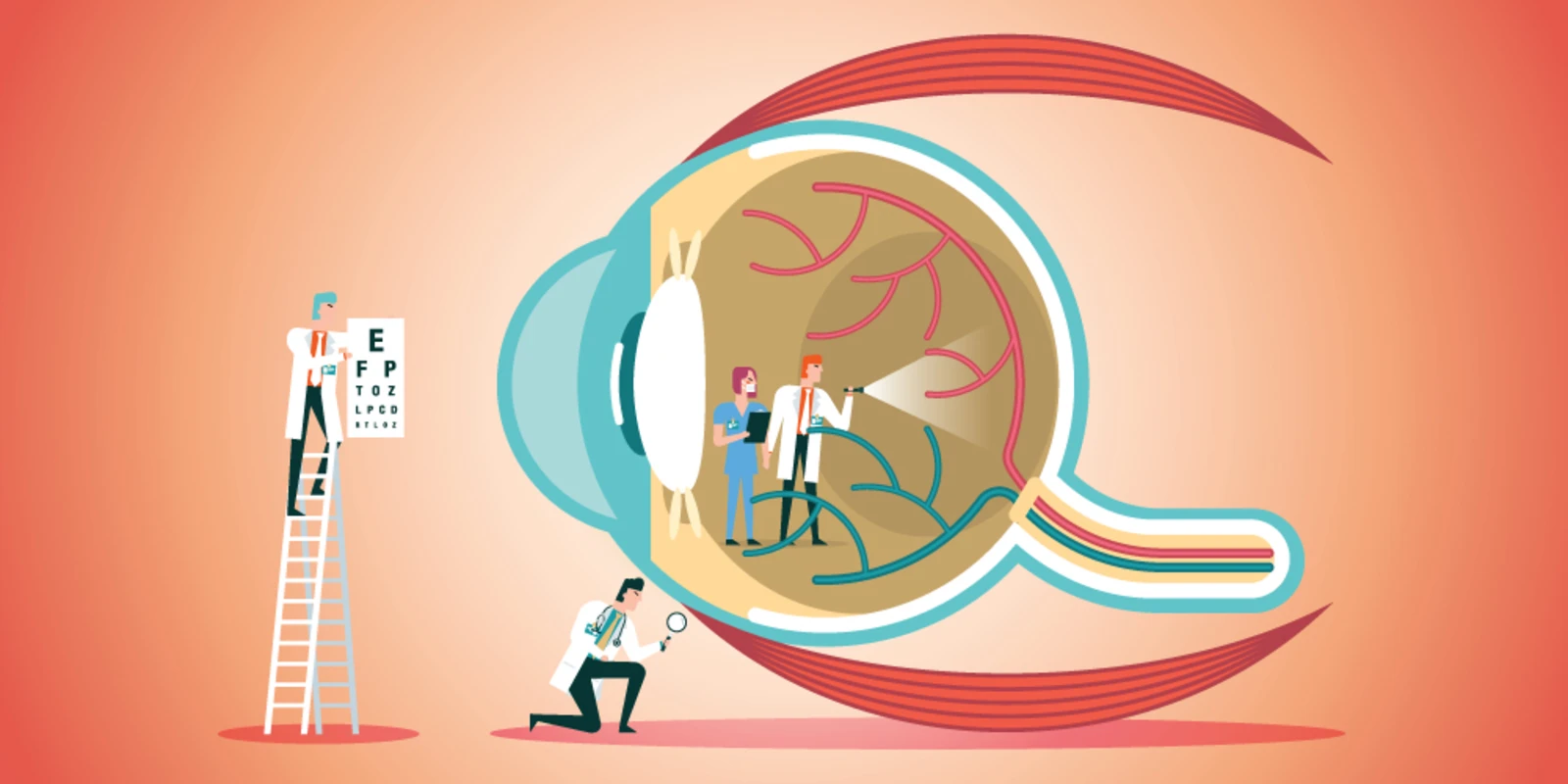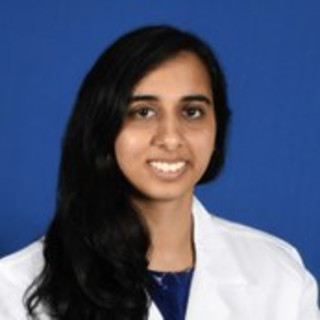“Ms. Dennis, let’s focus on getting through this night together. I promise we are going to do our best for you, we’ll operate on you as soon as we can,” I replied, holding her hand. Internally though, I was terrified. It was 1 a.m. in the ED and I was the on-call ophthalmology resident. It was the first time I had ever been called for a ruptured globe. Of course, I had read about them in my textbooks but in practice, it was very different. Blood streamed down the patient’s face as she continued to vomit uncontrollably despite heavy doses of anti-nausea medication. The more she vomited, the more distraught she became. The ED team and radiology technicians, though incredibly kind and very competent, were also becoming increasingly frightened. It seemed as if a large part of my job at that moment was to keep everyone, including myself, calm.
The next day, after a very long night of assessing the patient and then emergently operating, I stopped by her bedside to check on her. Ms. Dennis was a different person.
“Thank you doctor for being by my side. I’m sorry if I said anything to offend you or was angry, I was just so scared. I’m still scared. Will I be able to see?”
In the U.S., legal blindness is defined as having vision worse than 20/200 in the better seeing eye after correction. What this means is that what a person without vision impairment can see at 200 feet, a person with 20/200 vision can only see at 20 feet, after correcting for any kind of refractive error. It is estimated that one million people in the U.S. are legally blind, and 3.2 million people are visually impaired. The leading causes of vision loss are glaucoma, diabetic retinopathy, and age-related macular degeneration.
Ms. Dennis has been my patient since that very long night we spent together during my first year of ophthalmology residency. To her, I am her first responder, her surgeon, her primary ophthalmologist. To me, she is a symbol of strength and bravery, and has taught me more than any book about how to deal with patients facing blindness.
Ms. Dennis was fairly young when she sustained the injury that caused her to become completely blind in her left eye. She had multiple surgeries after her first rupture repair, and is now completely blind in that eye, meaning she cannot even sense light. Despite all of my surgical and medical management of her condition, what Ms. Dennis has really impressed upon me is the fact that even though she will never see out of her left eye, I am still her ophthalmologist, and I will continue to care for her visual needs.
Caring for her visual needs has meant many different things. Ms. Dennis became very conscious of the fact that her injured eye wandered. With reconstructive surgery, we improved the wandering to help both her eyes face in the same direction. This allowed her to feel confident again, and to continue working. Caring for her has also meant ensuring that her remaining eye is protected and retains good vision. I helped Ms. Dennis acquire protective glasses, and conduct a full check up on her good eye whenever she presents for an appointment. Ms. Dennis also requires help with pain management and inflammation in her injured eye. Blindness or injury in one eye can often lead to shrinkage of the eye, a condition called phthisis bulbi, and can also cause uncontrolled pain and inflammation. So far, Ms. Dennis has been lucky in that she has not experienced these symptoms, but it is something we discuss frequently, and something that she knows she has to make me aware of.
While Ms. Dennis is thankfully only blind in one eye, and has great vision in her other eye, many of the patients I care for are blind in both eyes. For my patients who have even minimally remaining vision in one or both eyes — what we call light perception vision (the patient can only detect light) or hand motion vision (the patient can only detect movement or light) — I work hard to ensure that they continue to retain even that little bit of vision. At some point, Ms. Dennis gained light perception vision after her injury. She was so excited to see light with that eye, and was devastated when that vision was lost. Any sort of visual function, no matter how minimal it seems, is noticed very much by patients, and is therefore something I work to preserve. For patients who are visually impaired in both eyes, it is very important to maintain their ability to function in daily life. In New York City, we often refer patients to places such as the Lighthouse Guild, an organization that offers training for patients with low vision in using low vision devices and conducting activities of daily living.
My journey with Ms. Dennis has been particularly significant because, together, we were able to travel through so many different stages of care. In medical school and in residency, we learn a lot about how to be a doctor. Becoming a physician doesn’t just mean understanding the science behind disease, or memorizing different disease entities and organ systems. A physician must also understand how to communicate with patients and how to guide them through their time of illness and beyond. Blindness is the end outcome in ophthalmology. However, caring for blind patients has shown me that life does not end with blindness, and that I must continue to care for my patients’ eyes, long after they are unable to use them to see.
How do you continue to care for your patients after they’ve experienced an “end outcome”?
Dr. Karani is an ophthalmology resident at the Columbia University Medical Center in New York City. She completed her MD/MPH at Johns Hopkins University School of Medicine and is passionate about taking care of patients and understanding their stories, solving public health issues affecting underserved populations, and writing about her experiences. She is a 2020–2021 Doximity Op-Med Fellow.
All names and identifying information have been modified to protect patient privacy.







